Breadcrumb
Part 3: Planet Hunting with the TESS Satellite
Resources: Zooniverse: Planet Hunters TESS
TESS: the Transiting Exoplanet Survey Satellite
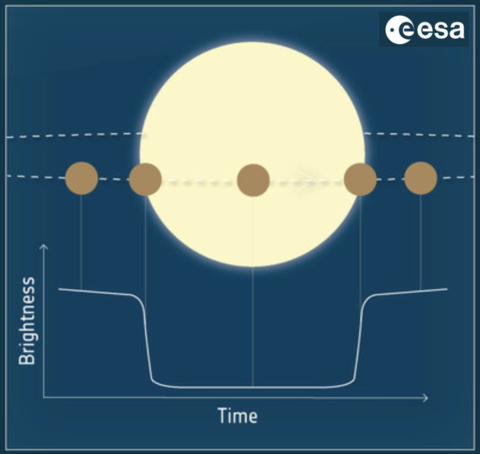
The TESS space telescope was launched in April 2018 on a SpaceX Falcon 9 rocket. TESS surveys the whole sky, observing stars to determine if they have exoplanets orbiting them. TESS uses the transit method for exoplanet detection. As seen in the diagram at right, we can create a graph of how the brightness of a star changes with time. We call this sort of plot a lightcurve. In the transit method, if stars are observed and their exoplanets happen to be at the correct orientation relative to our line of sight, the exoplanet will pass in front of the star, causing the exoplanet to block light from the star, dimming the lightcurve. The depth of the dip in the lightcurve can be used along with information about the host star to determine the properties of the exoplanet such as its radius.
TESS will work to find nearby stars with interesting planetary systems. It will study a lot of the same stars as the new James Webb Space Telescope (JWST). Having used TESS to identify good candidates for study, scientists from TESS will work with James Webb Space Telescope scientists to get the first spectra of the atmospheres of exoplanets. TESS has divided the sky up into 26 ‘sectors’, and every month it observes a new sector, collecting brightness data of all the stars in the sector every 2 minutes. It passes close to Earth at the beginning and middle of the sector, and it transfers collected data back when it does so.
Classifying the Lightcurves to Confirm Potential Exoplanet Transits
The fuzzy horizontal lines of points on the plots below are lightcurves, points representing the amount of light from a star. On these lightcurves, time is on the x-axis and star brightness is on the y-axis. The lightcurve at below left is a lightcurve with no transit. The lightcurve at below right shows a basic, simple exoplanet transit. The transit can be seen as points on the lightcurve that are lower than others. A yellow box has been drawn around the transit; you will need to mark any exoplanet transits you see with boxes. If you do not see any exoplanet transits, you do not need to mark anything. Once you are done, move on to the next light curve. (The blank space in the middle of the lightcurve at below left is missing data because this is the time when TESS passes near to Earth and turns and points at the Earth to transfer its recently collected data.)

Lightcurves may have different shapes and appearances. Below are all examples of transit lightcurves. There may be many transits, or just one or a few. The lightcurve may be a straight horizontal line, or it may be wavy due to stellar variability (see later in these instructions). Note how on how the left hand y-axis of each lightcurve, the dip in the lightcurve never goes down to a number greater than 1 (more negative than negative 1); the transits don’t block very much light (circled in orange). Also note how in the top left lightcurve below, the transit has a U-shape. If you zoomed in on all exoplanet transits, all the exoplanet transits would look U-shaped.
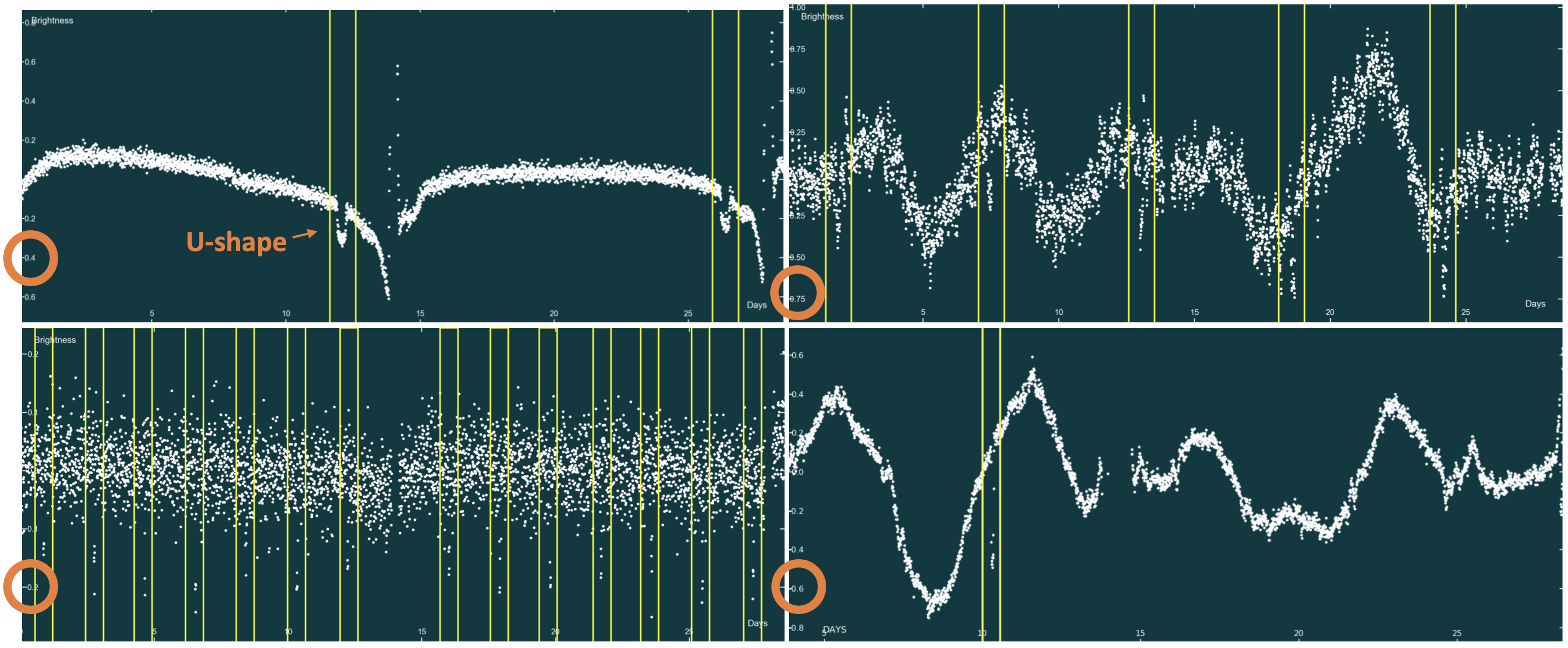
Light Curve Complexities
There are a few different astrophysical and instrumental phenomena that you should be aware of so as to not accidentally classify the features of these occurances in your light curves as exoplanet eclipses. Because of these complications, some of the classifications you must do may be a bit challenging. Don't be discouraged however and just do the best you can. Read on to learn about how these concerns manefest visually.
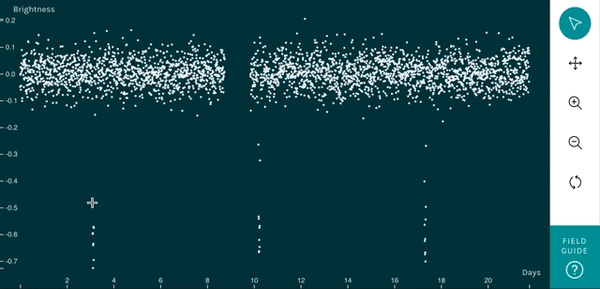
The Zooniverse: Planet Hunters TESS tutorial demostrates how to mark each lightcurve. Credit: Zooniverse
Eclipsing Binaries
Some lightcurves have features that appear to be transits but are not. Most star systems are not single; binary star systems are stars that orbit around another star. When stars orbit one another and if the alignment is right, we can also see them eclipse one another’s light, just as an exoplanet eclipses its host star’s light. An #eclipsingbinary like this can show up in the TESS data. See the example light curves below. In the first three panels, the eclipses appear like transits. In the last panel, the stars just change the shape of the lightcurve as a whole quite dramatically.
There are ways to tell if the eclipse you’re seeing is that of an exoplanet passing in front of its host star or just that of an #eclipsingbinary star system. First of all, note the values on the y-axis. Stars will block much more light than a planet will. See how the dip in the lightcurve goes down to numbers much greater than 1 (circled in orange; much more negative than negative 1), unlike an exoplanet transit. Also note how in the top left lightcurve below, the #eclipsingbinary transit has a V-shape, unlike the U-shape characteristic of an exoplanet transit.
If you encounter eclipsing binary transits as you classify your lightcurves, mark these by also drawing a box around all the transits.
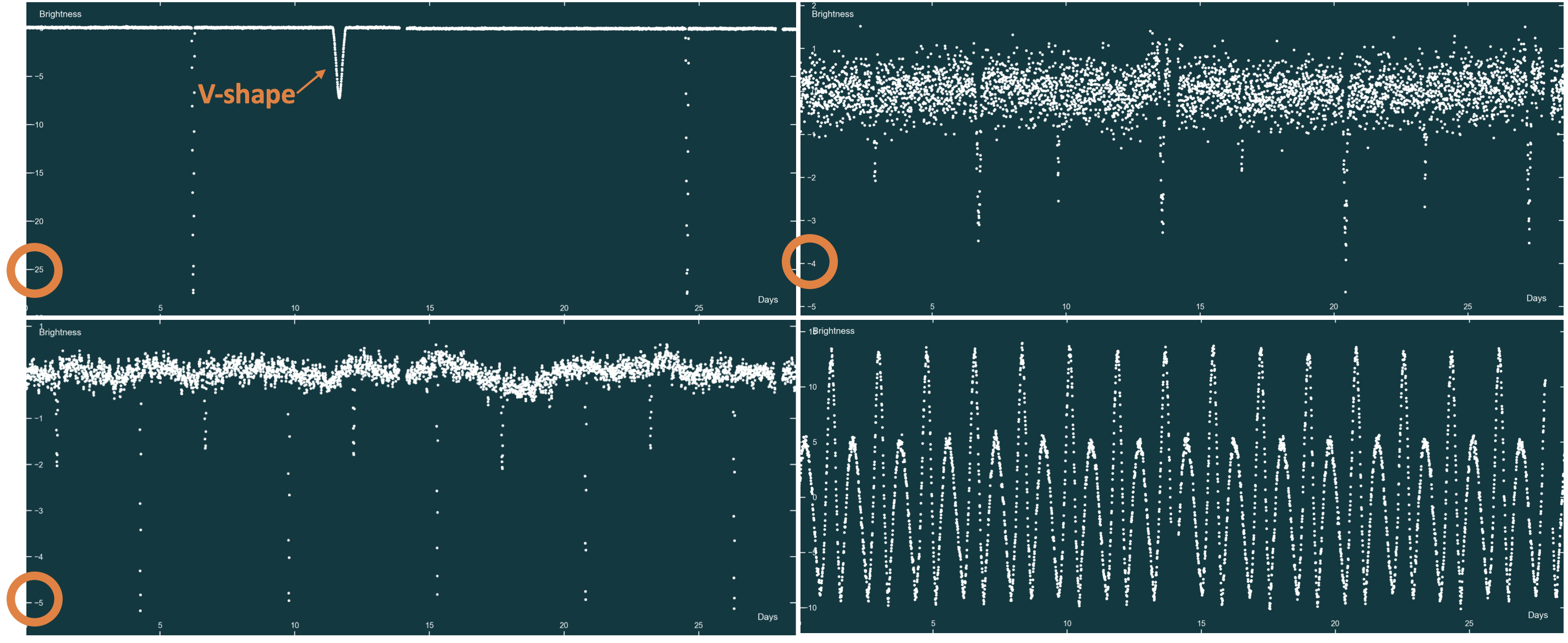
Stellar Variability
Stars may change in brightness because large starspots (dark, cooler regions on a star; sunspots, but larger and on stars beside the Sun) come into view as the star turns on its axis, or because the star is pulsating in brightness as well as physical size. Below, the top two lightcurves show stellar variability due to starspots, and the bottom two light curves show stellar variability due to pulsation. These features can make exoplanet transits hard to detect. Do the best that you can; mark any exoplanet transits with boxes if you see them, and submit the classification by clicking ‘Done’ as normal.
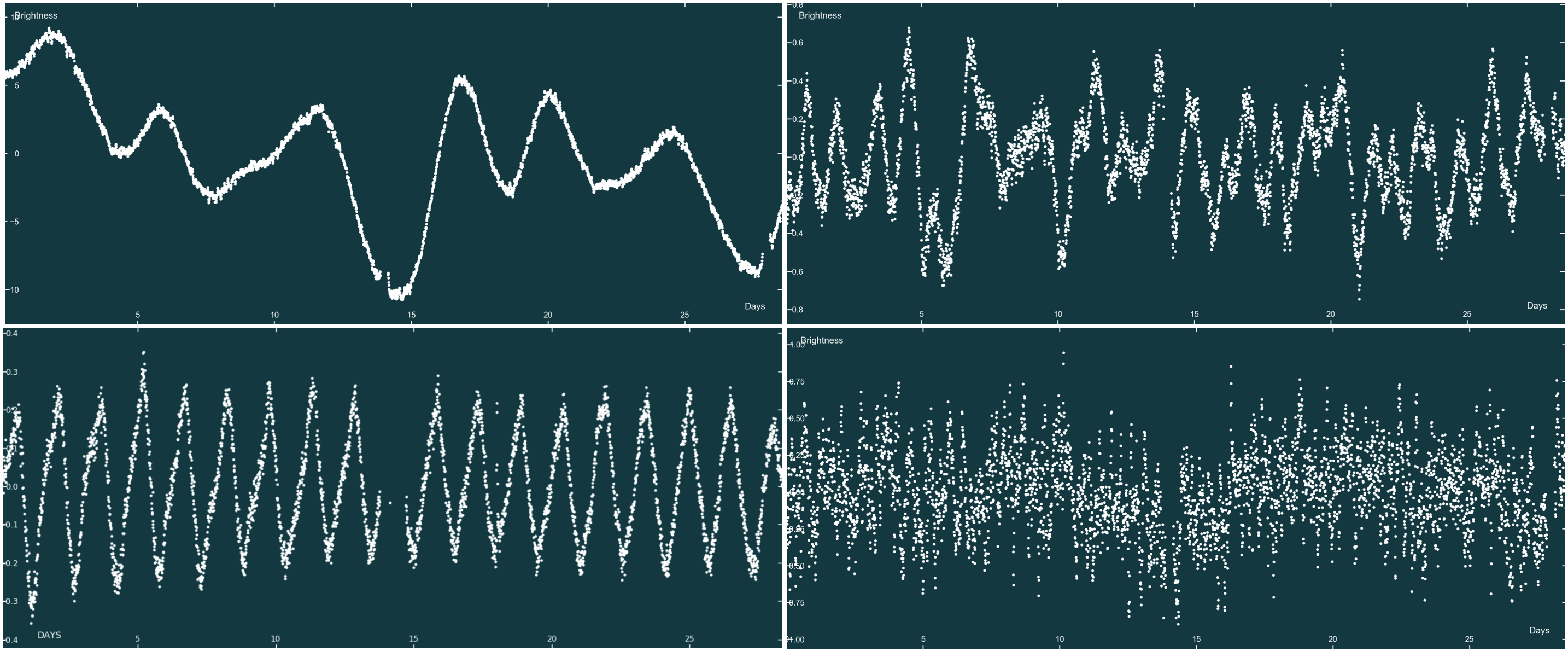
Systematic Effects
Systematic effects, or a #glitch, are sometimes present in the lightcurves due to imprecisions in the electronics of the space telescope and its cameras. Due to a #glitch, at the beginning or end of a lightcurve, or before or after the gap in the middle of the lightcurve (as the telescope delivers data to Earth), there may be features resembling an exoplanet transit. Don’t worry about this too much, but consider that any features that look like exoplanet transits at the beginning or end of a lightcurve or before or after the gap in the middle of the lightcurve might be suspect. Mark these features or don’t; don’t worry too much about this, just consider and know that instruments are not perfect.